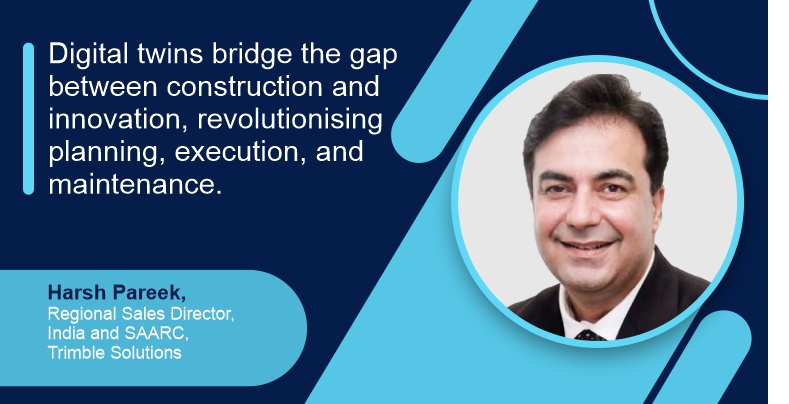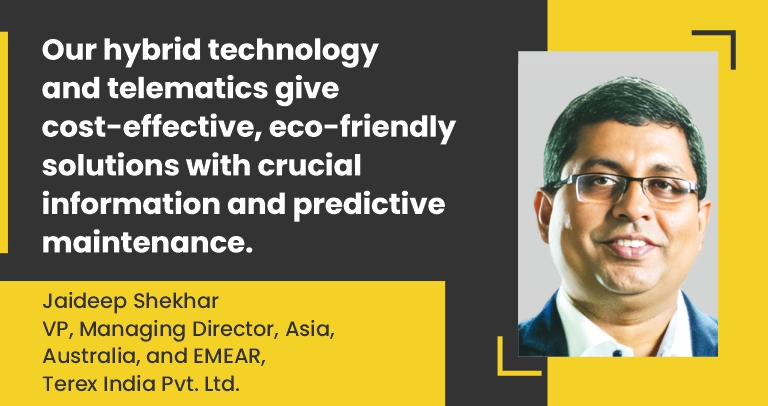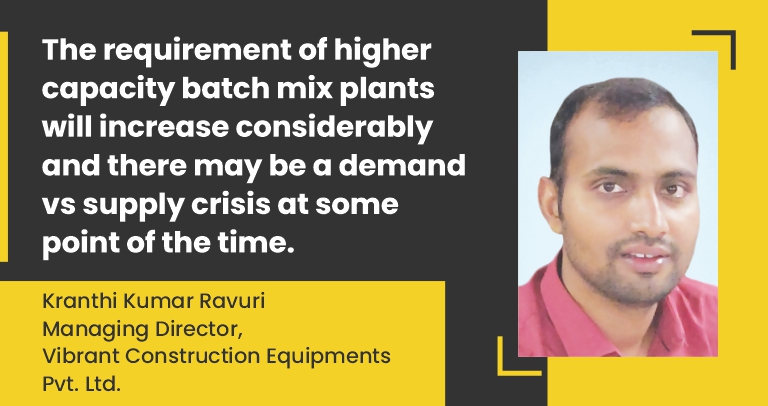There has been an increasing shift towards clean energy
By Edit Team | July 9, 2021 11:45 am SHARE

“There is a perceptible shift towards products with cleaner, greener and smarter technology in the warehouse equipment segment”, says Anil Lingayat, Executive Vice President and Business Head, Godrej Material Handling.
What is the current market size of material handling equipment (MHE) in India? What is the growth trend?
The data for FY21 shows that the total Indian market is approximately 16,000 units out of which, electric powered material handling equipment occupies 56 percent of the market share.
According to reports, the estimated growth is around 6 percent CAGR between 2019 and 2025. Despite the sharp fall during the lockdown, India’s forklift industry revived sharply and is likely to be at the same level as 2019- 20 in this fiscal.
How is the demand trend for MHE evolving in India? What are the key demand drivers?
One of the major demand drivers has been the rapid evolution of India’s e-commerce and modern retail sectors. Logistics is dependent on lean warehouse operations across various sectors – fashion & lifestyle, online grocery aggregators, electronics, pharmaceuticals, automobiles or white goods. The warehousing industry is currently undergoing a transformation from traditional to modern infrastructure, with an emphasis on productivity and other evolving factors such as quality, consistency assurance, safety & security of goods, efficiency in operations as well as quicker turnarounds. Much higher preference is now given to efficiently designed warehouses over cost-effective warehouses by occupiers. Moreover, warehouses are also being strategically set up in locations to ensure timely delivery of products to remote areas, apart from the regular urban bases.
In sectors such as construction, the demand for forklifts is largely driven by companies in the building materials industries. This includes steel, cement, electrical cables, tiles, wood and all the items that go into an infrastructure project, an industrial property, commercial or a residential project. This has picked up considerably over the last few years and we believe this demand will sustain and grow. Across a variety of manufacturing industries especially smaller enterprises, the scarcity and rising cost of land and manual labour is driving the demand for forklifts.
What are the major technologies that are trending in MHE?
There has been an increasing shift towards clean energy (battery) due to operating economics and government push. Technologies such as warehouse trucks for specific tasks, forklift trucks integrating with warehouse management systems, etc. are emerging to cater to the growing scale and complexity of warehouse operations. IoT is a rapidly developing tool beneficial for monitoring fleet health, providing proactive or predictive maintenance as well as optimising fleet size.
Customers also prefer remote assistance through video to resolve simpler maintenance issues of their forklifts to avoid external personnel visits to their premises during the current situation.
Likewise, the new generation of managers and even forklift operators are more comfortable working with digital manuals, digital training programs and communication platforms. Even transactions are moving online.
We, at Godrej Material Handling – a business of Godrej & Boyce, expected these trends to unfold in advance and launched our product manuals on a digital platform which both our channel partners and customers can easily access, remotely. Therefore, we were successfully able to provide remote assistance to dozens of customers during the lockdown. We are also offering IoT services to our customers through our own IoT enabled product – Godrej Safelog.
While forklifts are a necessary and vital part of any material handling operation, they also present a risk in an environment with people and other handling equipment moving around. As such, safety accessories like Red and Blue Halo Lights, Camera systems, Biometric access etc. are on the rise. Some of these accessories come as standard features on our trucks.
How is the adoption of battery-powered equipment picking up over diesel-powered ones?
Due to a growth in warehouses, the demand for electric material handling equipment has increased. Industries governed by strict norms such as Food & Beverage and Pharma, were already using electric equipment. However, we have recently seen the increase in demand in other industries for their internal as well as inter-plant movement; this demand has been particularly notices for our all-weather electric forklift truck.
There is no doubt that there is a perceptible shift towards products with cleaner, greener and smarter technology in the warehouse equipment segment. However, there have also been concerns in the area of electric battery powered equipment to respond to user needs like enabling the forklift to run longer hours on a single battery charge, or enabling users to charge batteries at a convenient time rather than when the battery needs to be charged. We have been able to address these concerns with the introduction of higher capacity batteries which can run for two-shift operations on a single charge. We are also working on alternate battery technologies to shift to a cleaner and greener future.
How is the buying pattern of customers changing now? How is rental gaining traction?
Rapid increase in e-commerce is creating an immense growth potential for the material handling industry. This has advanced the setting-up of new facilities entailing a growth in demand for specialised forklifts to facilitate their operations. Such facilities involve consultants designing the entire solution to include warehouse design, racking, path layouts, material flow etc. This necessitates MHE players to work with the consultants right from the design phase. Existing facilities have a shorter decision cycle for conventional/standard products.
Various factors that resulted from the pandemic such as supply chain disruption, tight liquidity, restricted capex budgets, labour shortage and spiking commodity costs led to an increased demand for the rentals business of forklifts. This is because the payback cycle for investing in new equipment was delayed in the short-term. This trend is expected to continue in the future. As the Indian material handling market matures, we expect equipment finance leasing will also catch up in India. We have already partnered with a leading leasing company in India.
What are the major challenges faced by MHE business in India?
India still has one of the highest costs proportioned to supply chain. One of the main reasons is the low palletisation or low standardisation of pallets for materials.
Market volatility and uncertainty in demand are major challenges in today’s time. Disruption in supply chain from Covid has led to scarcity and price escalation of key commodities. While some of the factors drove the need for material handling equipment, others made it difficult to put down the money for new forklifts. Fluctuations in demand further complicate the issue. To meet these uncertainties, many companies opted for rental equipment in the shortterm. Others may opt for leased forklifts.
How do you look at the market opportunities for MHE in future?
E-commerce has gained a new, higher level of consumer demand that will persist in the foreseeable future. Most industries are affected by a shortage of labour and today, the need to focus on optimising your supply chain is higher than ever before. Reducing turnaround time for inbound and outbound material, space optimisation of warehouse and availability of financial instruments, cumulatively, these factors have increased the need to adopt mechanised handling in various forms.
The material handling equipment industry must create and provide a range of customised solutions to customers. Not only in terms of different products for different applications and duty cycles, or different levels of handling mechanisation, but also about different offerings like leasing, rental, maintenance contracts, operations contracts and etc. The deployment of IoT-based solutions will lead to new business models and very different solutions for customers. In other words, customers’ needs will change and grow more diversely and equipment manufacturers have to prepare to serve those needs.
We, at Godrej Material Handling, will continue to introduce new products and services in the market and invest in developing new technologies to facilitate our customers to increase their productivity and safety at their workplace. We are also building a state-of-the-art manufacturing facility which will be operational next year.
Cookie Consent
We use cookies to personalize your experience. By continuing to visit this website you agree to our Terms & Conditions, Privacy Policy and Cookie Policy.





















